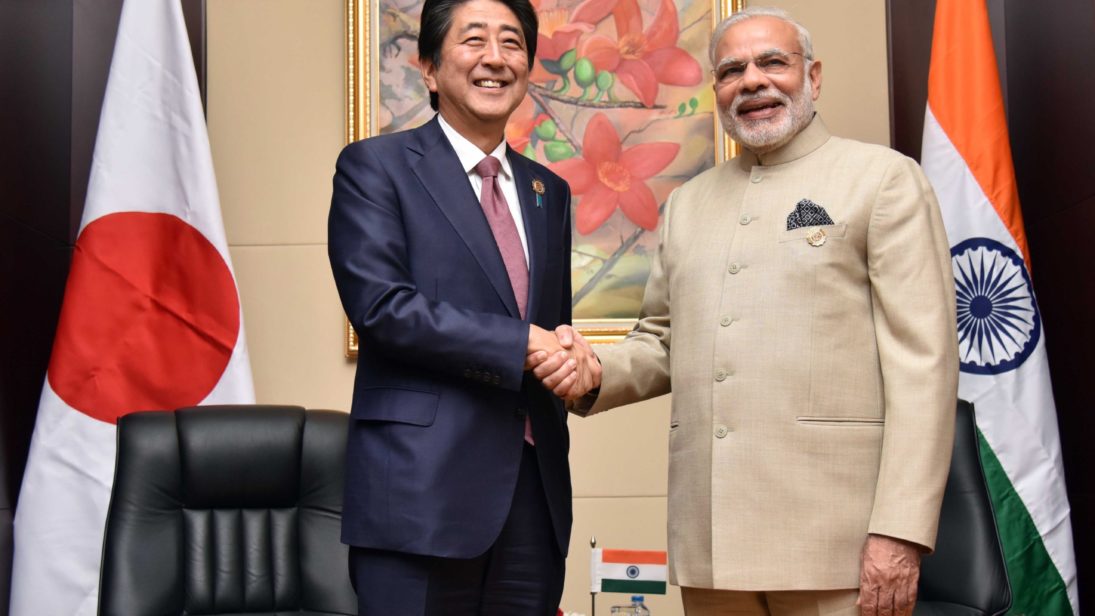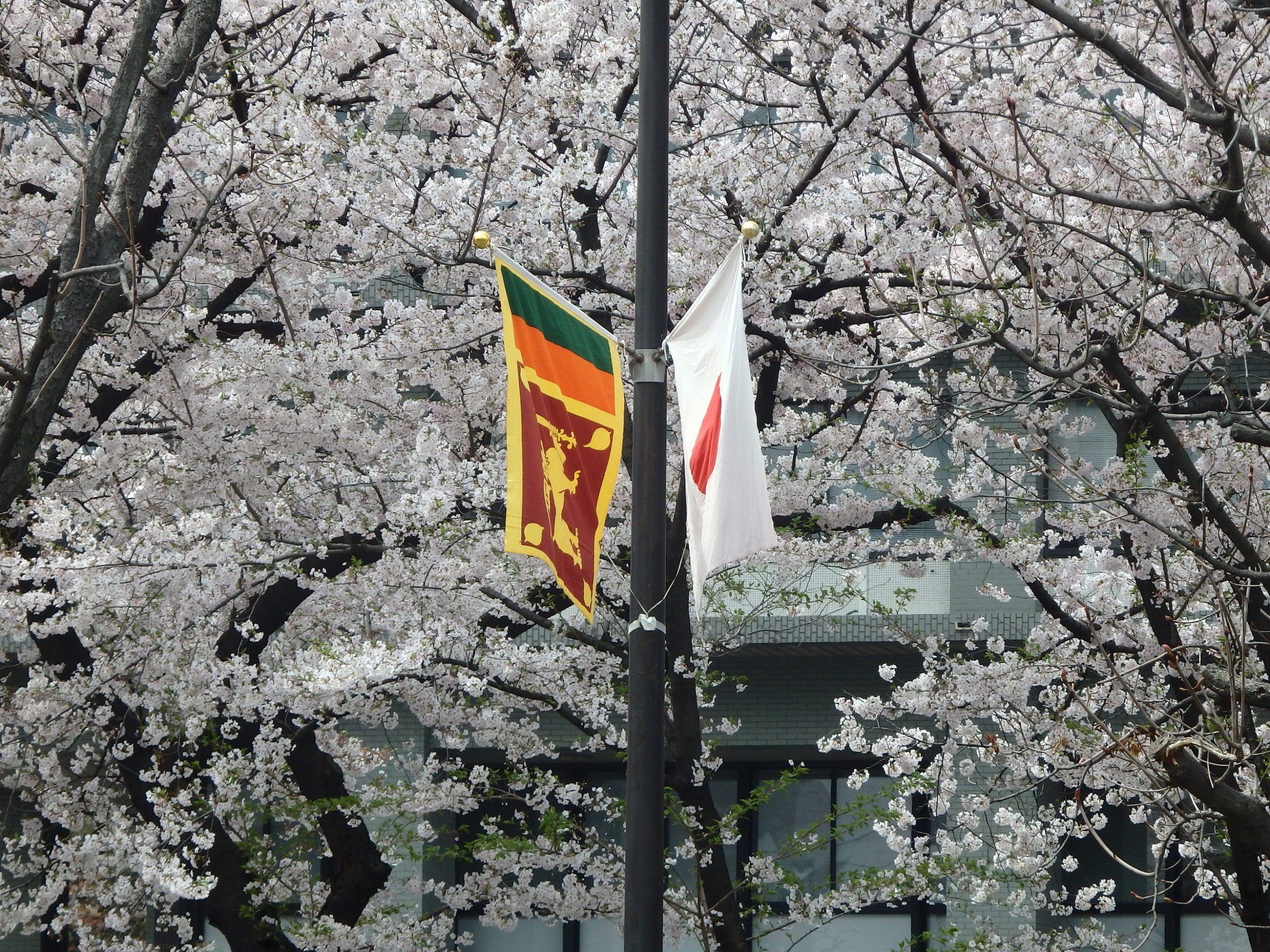
Japan has long been a major development partner for smaller South Asian states, but under the second Abe administration, Tokyo has begun to expand these ties beyond developmental partnerships to include strategic engagement. This trend is part of the administration’s Free and Open Indo-Pacific (FOIP) strategy and a broader policy to strengthen its global outreach under the rubric of “diplomacy that takes a panoramic view.”
However, Tokyo’s strategic engagement in South Asia is selective. It has little direct vital interests in the subcontinent, and thus, the region is not a priority for Tokyo compared to others like Southeast Asia and the Middle East. Meanwhile, Japan has already developed a robust partnership with India, the regional hegemon, primarily to counterbalance China at the global level. Against this backdrop, Japan’s current approach toward South Asia can be described as “India-plus.” Namely, while further deepening cooperation with Delhi, Tokyo has selectively redefined and strengthened its relationships with certain geopolitically important countries in the region, in concert with India’s “Neighborhood First” policy.
While “India-plus” is a reasonable approach for Japan in South Asia given its limited strategic interests in the region, the strategy comes with some constraints on its relationship with Pakistan. Japan should consider the need to rectify these, considering the role Pakistan can play in securing its energy sea-lanes. Tokyo should also note the challenges that could arise from its close alignment with Delhi.
Sri Lanka and Bangladesh: The Focal Points
The Abe administration has been focusing on two South Asian countries that it perceives as geopolitically important: Bangladesh and Sri Lanka.
While further deepening cooperation with Delhi, Tokyo has selectively redefined and strengthened its relationships with certain geopolitically important countries in the region, in concert with India’s “Neighborhood First” policy.
From Tokyo’s perspective, the geographical significance of Bangladesh lies in inter-regional connectivity: Bangladesh is located at the “intersection between India and ASEAN,” both of which are the focal points of Japan’s strategic and economic outreach. In May 2014, Japan established a “comprehensive partnership” with Bangladesh and proposed the Bay of Bengal Industrial Growth Belt (BIG-B). Under this USD $6 billion scheme, the two countries are developing the first deep-sea port in Bangladesh and a coal-fired power plant in Matarbari, along with a railway system in Dhaka. Japan Maritime Self-Defense Force vessels recently visited Bangladesh and engaged in goodwill trainings.
These efforts are in line with the Modi government’s regional diplomacy, which also places importance on its relationship with Dhaka and has touted Bangladesh as a showcase of its “Neighborhood First” policy. Delhi sees the location of Bangladesh as crucial to its efforts to improve India’s connectivity with Southeast Asia and has sought to enhance road and rail linkages with the country. These overlapping interests between Tokyo and Delhi have led to joint efforts by Japan and India in Bangladesh in the field of connectivity, such as improving the road link between Ramgarh in northern India and Baraiyarhat in southern Bangladesh, as well as constructing a bridge and providing rolling stock for the railway over the Jamuna river in Bangladesh.
Japan’s other key focus in South Asia is Sri Lanka, which it sees as a vital partner for securing its sea lines of communication (SLOCs) due to the latter’s location close to the Indian Ocean trade routes. China’s growing influence in this island country in recent years has also raised concerns in Japan, further underlining the need for Tokyo to engage with Colombo.
Given this background, while Tokyo remains a major development partner for Colombo, its current strategy toward the country is focused on enhancing a maritime security partnership. When Abe toured Sri Lanka in 2014 as the first Japanese prime minister to visit the nation in 24 years, the two countries established a bilateral dialogue on maritime security and oceanic issues. 2018 saw the first ever visit by the Japanese defense minister to the country and the provision of two Japanese fast patrol vessels for the Sri Lankan Coast Guard. Japanese Self-Defense Forces have also provided capacity-building assistance to Sri Lanka, focusing on search and rescue. In February 2019, the two navies agreed to hold an annual joint exercise.
India, which sees Sri Lanka as part of its sphere of influence, has also ramped up its engagement with the island nation in recent years. This in large part was a reaction to China’s expanding influence in Sri Lanka, demonstrated by its submarine visit to Colombo in 2014 and its effective confiscation of the Hambantota Port in 2017. India’s efforts with Sri Lanka also encompass building maritime cooperation as an important pillar, including through the provision of patrol vessels, and holding joint naval and coast guard exercises. Thus, Japan’s approach to Sri Lanka is complementary to India’s and the two have sought to combine forces in Sri Lanka through joint initiatives. For instance, India and Japan signed a memorandum with Sri Lanka on the joint development of the East Container Terminal of the Colombo port last year, and Sri Lanka also joined the Japan-India coast guard exercise as an observer in 2018.
Thus, with both its unilateral efforts to assist these countries as well its joint initiatives with India, Tokyo has emerged as a significant and trusted player in Bangladesh and Sri Lanka.

Downsides of “India-Plus”: Stance Towards Pakistan and Risk of Closeness to Delhi
While this “India-plus” strategy has been beneficial for dealing with Sri Lanka and Bangladesh, it constrains Japan’s engagement with a regional power that has a difficult relationship with India, i.e. Pakistan. Although Japan and Pakistan maintain cordial relations, Tokyo seems to have chosen to keep its ties with Islamabad limited, out of respect for its relationship with Delhi. In fact, Japan has come to take a pro-India stance in matters related to India-Pakistan relations, as seen through the joint statements issued after each Japan-India summit since 2016 asking Islamabad to bring to justice the perpetrators of Pakistan-backed terror attacks in India. There is little tangible security cooperation in progress between the two countries and there has been no Japanese prime ministerial visit to Pakistan in the past 15 years.
Considering the geographical importance of Pakistan for the security of Japan’s SLOCs and Tokyo’s still cordial relationship with Islamabad, Japan should be more active in Pakistan. Now is a good opportunity to do this when CPEC has triggered some worries in Islamabad with regard to its overreliance on the relationship with Beijing.
However, Pakistan, located right next to the Persian Gulf, could be an important partner for Japan in terms of helping secure its energy sea lanes. Moreover, Japan should be concerned that while Tokyo for the most part was the largest bilateral donor in Pakistan until 2004, it has become much less visible as China has emerged as the dominant economic player in the country through promoting large infrastructure projects under the China-Pakistan Economic Corridor (CPEC), making Islamabad more dependent on Beijing.
Considering the geographical importance of Pakistan for the security of Japan’s SLOCs and Tokyo’s still cordial relationship with Islamabad, Japan should be more active in Pakistan. Now is a good opportunity to do this when CPEC has triggered some worries in Islamabad with regard to its overreliance on the relationship with Beijing. Hence, it is worth trying for Japan, in cooperation with the United States, to engage Pakistan and give it room to maneuver vis-à-vis China. It should be noted that such efforts would complement India’s neighborhood policy too, because a Pakistan too close to China does not suit India’s interests either.
In addition to complications with Pakistan, the “India-plus” strategy could possibly cause other challenges in the future that arise from Tokyo’s close alignment with Delhi. First, India’s neighbors have historically harbored concerns regarding Delhi’s interference in their internal affairs, which has encouraged them to court China. Thus, Japan’s closeness to India can be a burden for Tokyo if political tensions arise between Delhi and its neighbors.
Second, Japan-India cooperation is likely to be perceived by South Asian states to be about countering China, even though what Tokyo intends to do in the region is larger than that. This perception can cause reluctance on the part of regional states to accept Japan-India joint initiatives so as not to alienate China, in the same way that ASEAN is cautious towards FOIP.
Conclusion
Overall, “India-plus” is a reasonable strategy for Japan to engage smaller South Asian countries. Focusing on nations with geostrategic locations that can help secure its interests and aligning efforts with India, the regional power with which it shares broader policy convergences (such as countering Chinese influence, promoting connectivity in the region, and securing sea lanes), are an effective use of the limited resources that Tokyo can divert to the region.
However, the above-mentioned downsides need to be addressed. With regard to engagement with Pakistan, Japan can start with expanding its assistance in the socioeconomic sector, especially in the underdeveloped provinces of the country, and plan high-level political visits, while clearly explaining its intentions to India.
The concerns related to Japan’s close alignment with Delhi are hypothetical at the moment, but they could arise in the future. To avoid them, Tokyo can do two things. First, while its efforts in the region are partly related to countering China, Japan should not unnecessarily play up this intent. Second, along with close coordination and joint efforts with India, Japan needs to maintain its own solo notable initiatives in the region to build relationships independent of India. If Japan does so, its “India-plus” strategy in South Asia could bring even richer dividends than it already has.
The views expressed here are those of the author and do not reflect the official policy or position of the NIDS, the Ministry of Defense or the Government of Japan.
***
Image 1: Narendra Modi via Twitter


